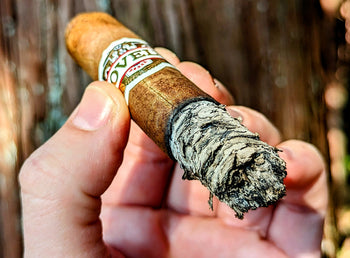For cigar smokers, the word "Sumatra" is no longer just synonymous with the Indonesian tourist destination. Sumatran tobacco produces a cigar flavor profile unlike any other, and its evolution in recent decades has been nothing short of spectacular.
Contrary to its Asian namesake, a massive amount of the tobacco bearing the title "Sumatra" is now being cultivated in Ecuador, and not in Indonesia. Granted, cigar tobacco is still being produced in large quantities on the island of Sumatra, but these crops are no longer the only option out there.
Over the years, cigar smokers have developed a taste for the Ecuadorian-grown variant of Sumatran tobacco. To avoid confusion, we tend to refer to tobacco crops hailing from the Asian island as "Indonesian" or "Indonesia Sumatra" tobacco, and not just "Sumatran." This veiny, earthy, and oily sun-grown tobacco leaf is still widely respected and utilized by cigar makers; as it offers a far more simple, old-school cigar flavor profile than its Ecuadorian alternative.
That being said, the characteristics of this rustic-looking tobacco leaf evolve tremendously once transplanted to Ecuador's cloud-encapsulated mountainous farmlands. Although more traditional, milder Sumatra cigar flavor profiles can still be found in certain Ecuador-grown Sumatran smokes, the country's climate tends to turn everything up a notch or two... or ten.
The result is a robust, spice-forward, earthen tobacco, intended to appease the palates of fans of fuller-flavored cigars. Even with its consistent cloud coverage mellowing out the sun-grown strength of certain Sumatran strains, the genetics behind this sort of smoke stand strong as one of the world's most flavor-forward and aromatic tobaccos.
Enticed by the sound of Sumatran smoking bliss? Give the wrapper on a Kristoff Sumatra a shot, or indulge in the Sumatran binder of a Buffalo Trace cigar to experience this magnificent leaf for yourself.

